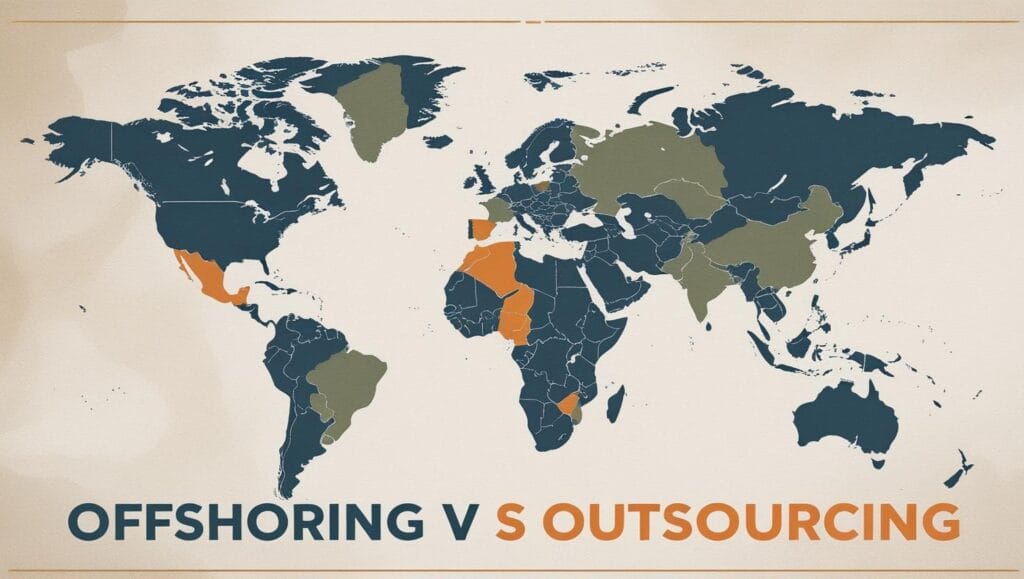The Accounting Equation: The Bedrock of Your Business Balance
Every building needs a solid foundation. For the entire world of accounting and business finance, that foundation is a simple yet profoundly powerful formula: the Accounting Equation. Whether you’re launching a startup, managing a multinational corporation, or simply trying to understand the health of a business, this equation is the unbreakable rule that keeps everything in check.
This guide will demystify the accounting equation, break down its components with simple examples, and show you why it’s the most critical concept for any entrepreneur or manager to master.
What Is the Accounting Equation?
At its core, the accounting equation is a formula that presents the relationship between what a company owns (its assets), what it owes (its liabilities), and the owner’s stake in the company (its equity). It is the mathematical foundation for the double-entry bookkeeping system and the balance sheet.
Think of it like a balance scale. On one side, you have everything the company owns. On the other side, you have all the claims against those things. These two sides must *always* be equal. The claims come from two sources: lenders (Liabilities) and owners (Equity).
This formula tells a fundamental story: a company has to pay for everything it has (its assets). It can pay for them using either debt (liabilities) or the owners’ own money (equity). There are no other options. This elegant simplicity is what makes the equation so robust.
Key Takeaways
- The Core Formula: Assets = Liabilities + Equity.
- Foundation of the Balance Sheet: The accounting equation provides the structure for the balance sheet, a key financial statement.
- Always in Balance: For every transaction, the total debits must equal the total credits, ensuring the equation remains balanced.
- Represents Ownership & Obligation: It clearly shows what a company owns and who has a claim to those assets.
Breaking Down the Components
To truly understand the equation, you need to be crystal clear on what each of its three components means. Let’s use the example of a small startup, “Jen’s Coffee Corner,” to illustrate.
1. Assets (What You Own)
Assets are economic resources controlled by the company that have future economic value. They are the things the business uses to operate and generate revenue. Assets can be tangible (physical items) or intangible (non-physical).
For Jen’s Coffee Corner, assets would include:
- Cash: Money in the bank and in the cash register.
- Inventory: Bags of coffee beans, milk, sugar, cups, and pastries waiting to be sold.
- Equipment: The espresso machine, grinders, refrigerators (these are called Property, Plant, and Equipment or PP&E).
- Prepaid Expenses: If Jen pays her shop’s insurance for six months in advance, that prepayment is an asset because it provides a future benefit.
2. Liabilities (What You Owe)
Liabilities are a company’s financial obligations or debts owed to other parties (creditors). They represent an outsider’s claim on the company’s assets.
For Jen’s Coffee Corner, liabilities might be:
- Accounts Payable: Jen bought coffee beans from her supplier on credit and has 30 days to pay the $500 invoice. That $500 is a liability.
- Loans Payable: She took out a $10,000 loan from the bank to buy her espresso machine. The outstanding loan balance is a liability.
- Unearned Revenue: A customer bought a $100 gift card. Jen has the cash, but she owes $100 worth of coffee and food. This is a liability until the customer redeems the card.
3. Equity (What the Owners Have)
Equity (also known as Owner’s Equity or Shareholders’ Equity) is the residual interest in the assets of the company after deducting all liabilities. In simpler terms, it’s what’s left over for the owners. It represents the owner’s claim on the company’s assets.
The equation can be rearranged to highlight this: Equity = Assets – Liabilities.
For Jen’s Coffee Corner, equity is comprised of:
- Contributed Capital: The initial $20,000 Jen invested from her personal savings to start the business.
- Retained Earnings: The cumulative profits the business has made over time that have been reinvested back into the company, rather than paid out to the owner.
The Accounting Equation in Action: A Practical Walkthrough
The real magic of the equation is seeing how it stays in balance with every single transaction. This is the essence of double-entry accounting. Let’s follow Jen’s first few business transactions.
Transaction 1: Jen Starts the Business
Jen invests $20,000 of her own money into a business bank account.
- Assets (Cash) increase by $20,000.
- Equity (Contributed Capital) increases by $20,000.
Equation: $20,000 (Assets) = $0 (Liabilities) + $20,000 (Equity) … It balances!
Transaction 2: Taking a Bank Loan
Jen’s Coffee Corner gets a $10,000 loan from a bank.
- Assets (Cash) increase by $10,000.
- Liabilities (Loans Payable) increase by $10,000.
Equation: $30,000 (Assets) = $10,000 (Liabilities) + $20,000 (Equity) … It balances!
Transaction 3: Buying Equipment
Jen buys an espresso machine for $8,000, paying with cash.
- This transaction only affects the asset side. One asset goes down, another goes up.
- Assets (Cash) decrease by $8,000.
- Assets (Equipment) increase by $8,000.
Equation: $30,000 (Assets) = $10,000 (Liabilities) + $20,000 (Equity) … It balances! The total assets did not change.
Transaction 4: Making a Cash Sale
Jen sells $500 worth of coffee to customers for cash.
- Assets (Cash) increase by $500.
- Equity (Retained Earnings) increases by $500 because revenue increases equity.
Equation: $30,500 (Assets) = $10,000 (Liabilities) + $20,500 (Equity) … It balances!
Frequently Asked Questions (FAQ)
1. Why is the accounting equation so important?
It’s important because it provides an essential check and balance on a company’s bookkeeping. If the equation doesn’t balance, it immediately signals an error in the accounting records. It’s the logical structure that underpins all financial reporting and analysis.
2. Does the accounting equation relate to the income statement?
Yes, indirectly. The income statement calculates a company’s net income (Revenues – Expenses). This net income is then added to Retained Earnings, which is a component of Equity in the accounting equation. So, a profitable company will see its Equity grow over time.
3. Can a company have negative equity?
Yes. If a company’s total liabilities exceed its total assets, it will have negative equity. This is a very dangerous financial position, often indicating that the company is insolvent and at risk of bankruptcy. It means that even if the company sold all of its assets, it still couldn’t pay off all of its debts.
4. Is Owner’s Equity the same as the company’s market value?
No, this is a very common misconception. Equity is an accounting value (often called “book value”). A company’s market value (or market capitalization for public companies) is its stock price multiplied by the number of shares. Market value reflects investors’ future expectations and can be much higher or lower than the accounting book value of equity.
Disclaimer
This article is for informational and educational purposes only. It is not intended to be a substitute for professional financial or accounting advice. Always consult with a qualified accountant to address your specific business needs.

